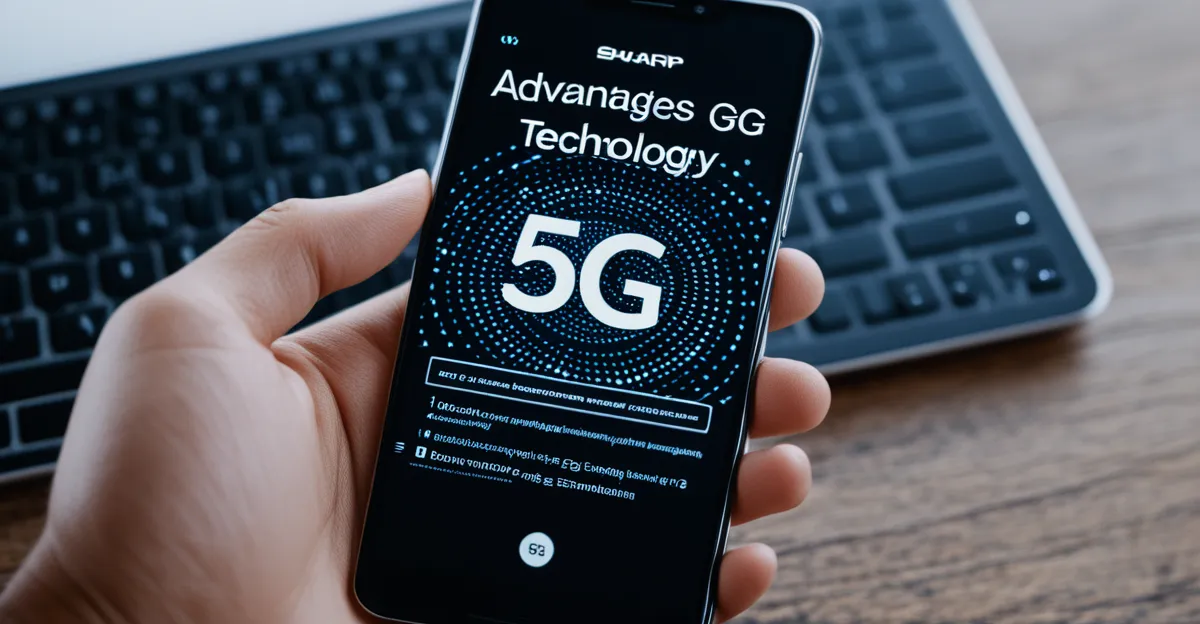Key Advantages of 5G Technology
The primary 5G benefits lie in its exceptional speed, low latency, and improved connectivity. With 5G speed, users experience faster data downloads and uploads, enabling seamless streaming of high-definition video and smooth real-time gaming. This speed leap is a game-changer for mobile internet, making previously cumbersome tasks effortless.
Another critical advantage is 5G low latency, which significantly reduces the delay between sending and receiving data. This ultra-low latency allows real-time responsiveness essential for applications like autonomous vehicles, remote surgeries, and interactive augmented reality experiences. The near-instant communication capability sets 5G apart from earlier wireless technologies.
Also read : How is the UK Using Technology to Enhance Urban Living?
Moreover, 5G enhances device connectivity by supporting a much higher density of devices per square kilometre. This improved network capacity means more smartphones, smart home gadgets, and Internet of Things (IoT) devices can reliably connect simultaneously without congestion. Enhanced connectivity fosters smarter ecosystems in cities and homes, driving digital innovation forward.
Together, these advantages make 5G a transformative force in mobile networking, offering speed, responsiveness, and connectivity previously unattainable at scale.
Also read : How is the UK leveraging technology for smart city development?
Main Disadvantages and Challenges of 5G
5G technology, despite its impressive benefits, comes with notable 5G drawbacks rooted mainly in infrastructure and coverage challenges. One of the key obstacles is the high cost of deploying new networks. Unlike previous generations, 5G requires a dense grid of small cells, which means substantial investment in hardware and installation, creating significant infrastructure challenges for network providers.
Another critical limitation is limited coverage. While urban areas often receive robust 5G signals, rural and remote regions still struggle with improved connectivity, or rather the lack thereof, as extending 5G networks to these areas remains economically and technically difficult. This disparity could widen the digital divide.
Furthermore, there are ongoing health concerns voiced by some communities and researchers about the long-term exposure to the higher-frequency radio waves used in 5G. Although scientific consensus currently finds no conclusive evidence of harm, these debates contribute to public uncertainty and can delay deployment.
In summary, although 5G promises transformational change, addressing the 5G drawbacks of costly infrastructure, spotty coverage, and health debates is essential to realize its full potential. Providers and regulators must negotiate these challenges to ensure broad and safe network availability.
Comparison: 5G Versus Previous Wireless Generations
The transition from 4G to 5G marks a substantial leap in mobile network evolution. 5G vs 4G comparisons highlight dramatic improvements in speed, with 5G speed reaching up to 100 times faster than 4G, enabling applications that were previously impossible. This increase not only benefits individual users but also supports data-heavy industries.
Network architecture changes are fundamental between these generations. 5G uses new spectrum bands, including millimeter waves, which offer broader bandwidth but require denser infrastructure. This spectrum utilisation shift enables improved connectivity and capacity, especially for high-density device environments, outperforming the traditional 4G setup that relied primarily on lower frequency bands.
Furthermore, 5G introduces ultra-low latency, vastly improving real-time responsiveness compared to 4G. This latency reduction is essential for emerging technologies such as autonomous vehicles and augmented reality. However, alongside these advantages, generation comparisons reveal unique challenges like increased infrastructure complexity and spectrum management.
Overall, 5G ushers in new opportunities for innovation and connectivity, reshaping the landscape of wireless communication beyond the capabilities established by earlier generations.
Real-world Applications and Societal Impacts
The practical 5G use cases are transforming multiple sectors, notably through enhanced IoT integration and smart city development. In smart cities, 5G enables real-time data exchange among sensors and devices, improving traffic management, energy efficiency, and public safety. This improved connectivity supports automated systems that respond instantly to changing conditions, creating more sustainable urban environments.
Autonomous vehicles also rely heavily on 5G’s ultra-low latency. Fast, reliable communication between vehicles and infrastructure is critical to safety and efficiency, making 5G essential for widespread deployment. These applications not only showcase the technology’s potential but also drive innovations that impact daily life and the economy.
From a societal perspective, 5G fosters digital innovation and stimulates economic growth by enabling new business models and services. However, these benefits come with challenges, such as concerns over privacy and security in a highly connected world. Additionally, the digital divide may widen if underserved communities lack access to robust 5G networks, emphasizing the need for inclusive infrastructure development.
By supporting smarter cities, IoT expansion, and autonomous technology, 5G’s societal impact is profound—offering solutions alongside critical conversations about equitable access and data protection.








